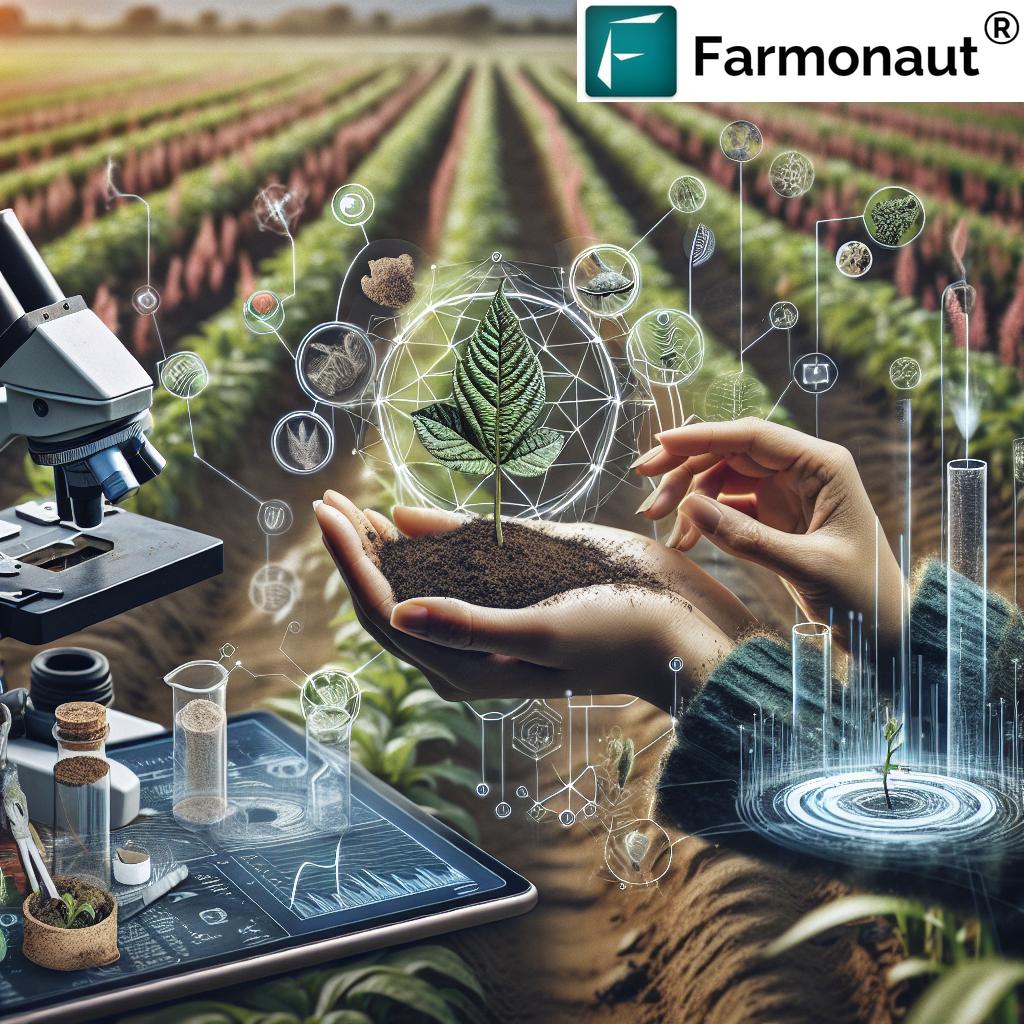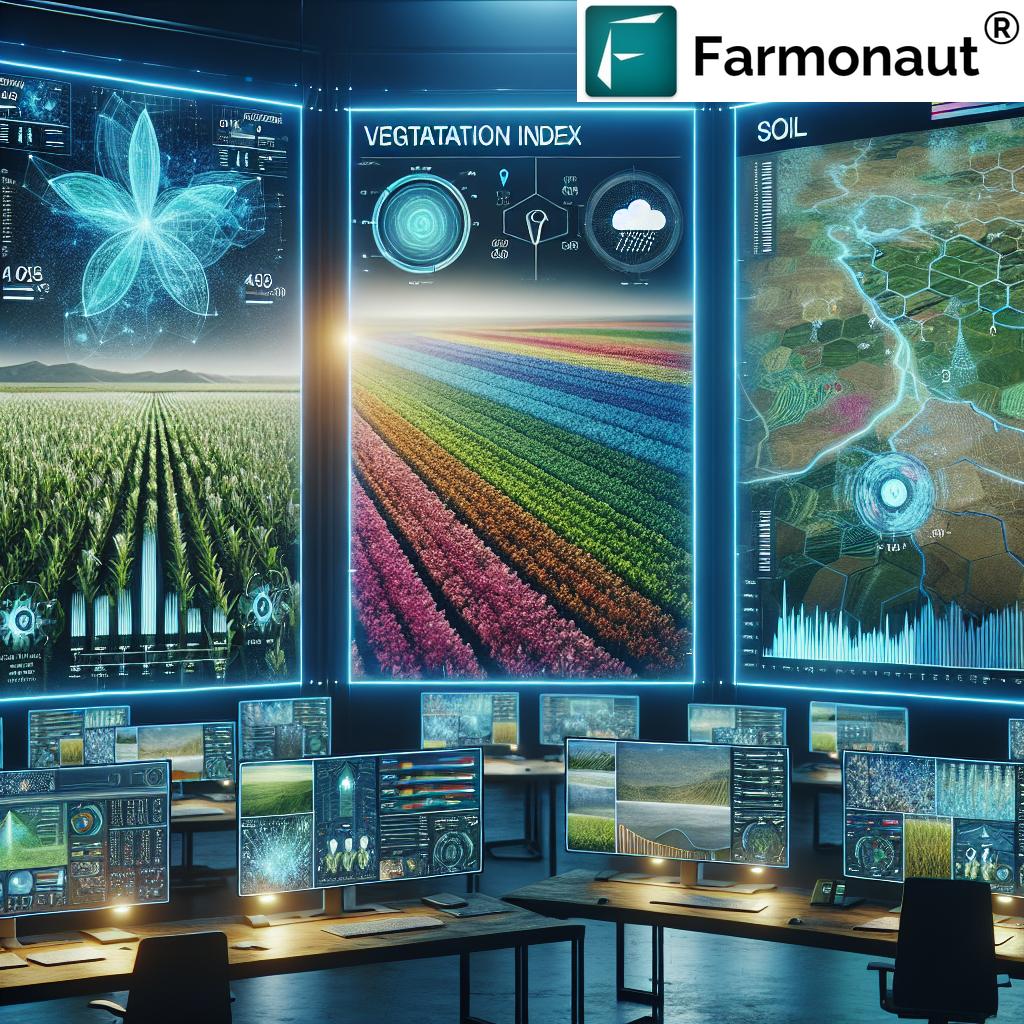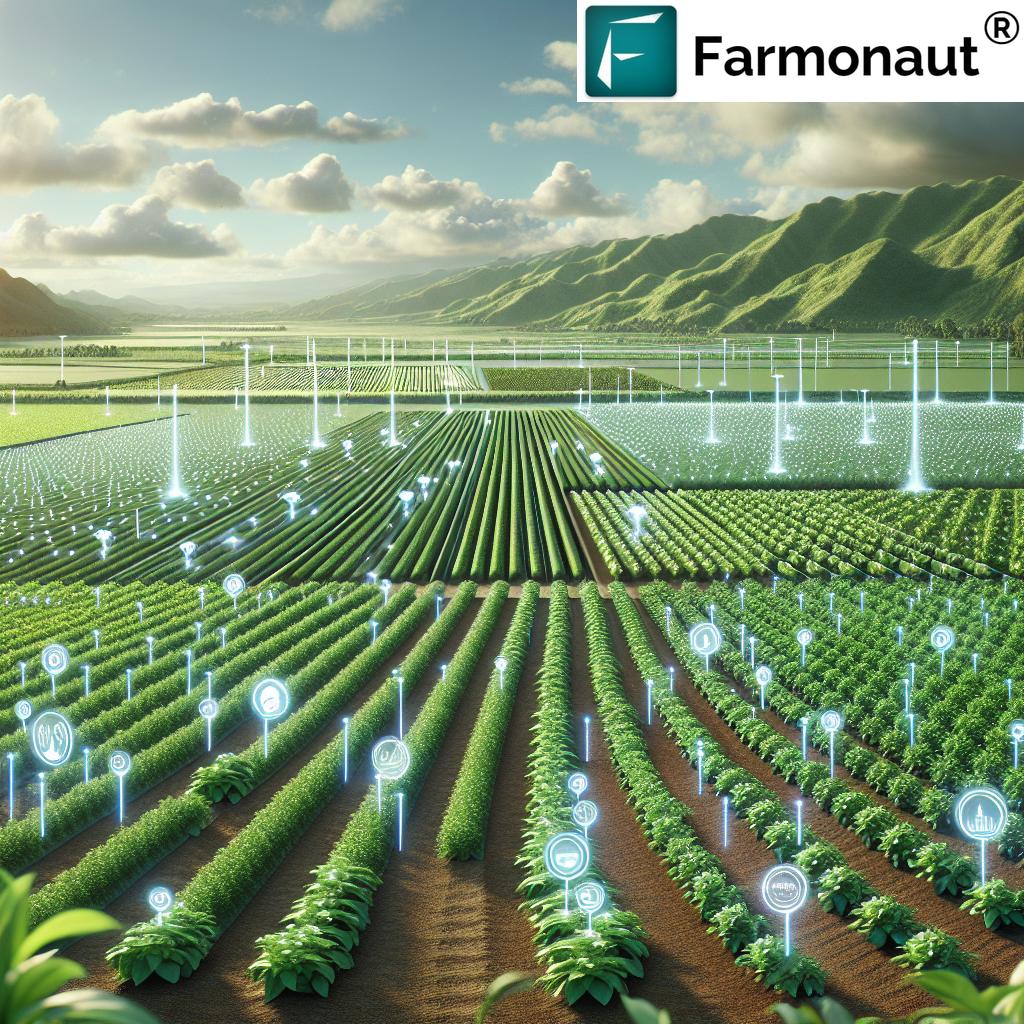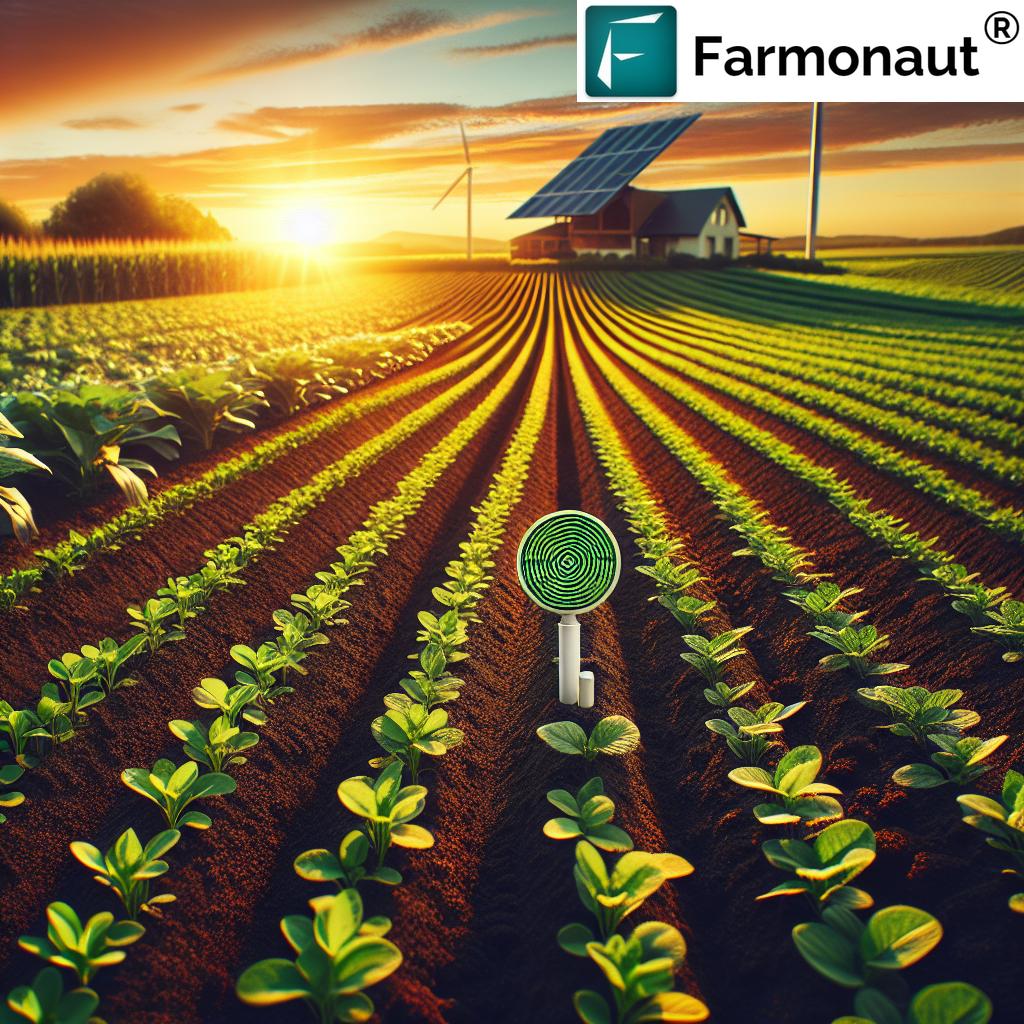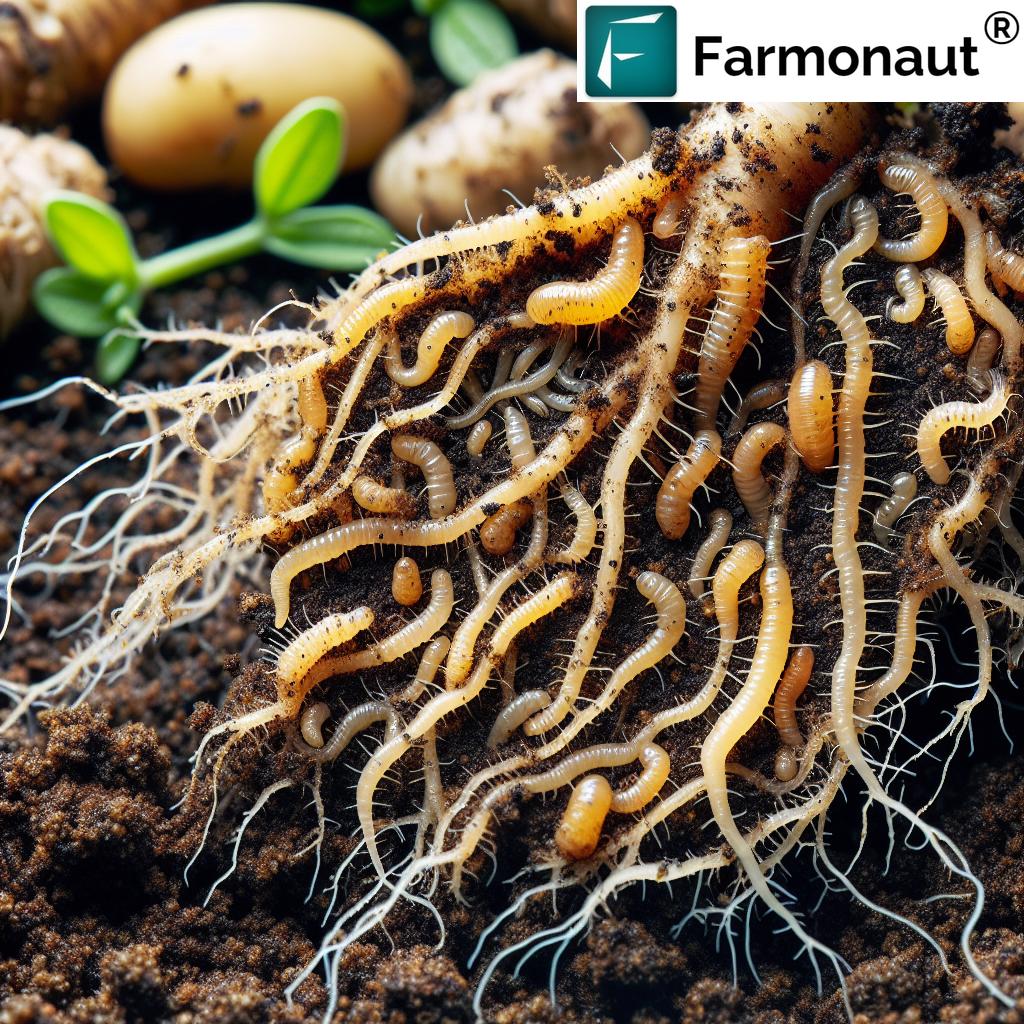Analyze Your Crop Performance: 7 Yield-Boosting Tools
- Introduction: The Power of Crop Performance Analysis
- Traditional Methods of Crop Performance Analysis
- Technology in Modern Crop Analysis
- 7 Yield-Boosting Tools for Crop Performance Analysis
- How We at Farmonaut Empower Modern Farming
- Key Performance Indicators in Crop Performance Analysis
- Integration of Traditional and Modern Approaches
- Feature Comparison Table for Yield-Boosting Tools
- Challenges, Considerations & The Future of Crop Performance
- Farmonaut Subscription Plans
- FAQ: Crop Performance Analysis
- Conclusion
“Precision agriculture technologies can increase crop yields by up to 20% through data-driven analysis and satellite monitoring.”
Introduction: The Power of Crop Performance Analysis
In the age of modern agriculture, analyzing crop performance has become the cornerstone of food security, farmer prosperity, and environmental sustainability. As a global society, we face rising population pressures, resource constraints, and the urgent mandate to adopt more sustainable farming practices.
A data-driven approach—combining the wisdom of traditional techniques with the power of modern technologies—enables today’s farmers to optimize yield, manage resources efficiently, and enhance productivity across farms of all sizes.
In this in-depth guide, we explore how precision agriculture technologies, satellite crop monitoring, and advanced agricultural data analytics are transforming the way we assess and improve crop growth, health, and outcomes. We’ll also introduce the 7 most effective yield-boosting tools, including actionable strategies and up-to-date examples, while demonstrating how we at Farmonaut make these advanced solutions accessible to all.
“Over 70% of modern farms use satellite data to optimize crop performance and support sustainable farming practices.”
Traditional Methods of Crop Performance Analysis
Even before the advent of satellites and smartphones, farmers have always analyzed crop performance using time-tested, hands-on methods. Many of these techniques are still vital for sustainable crop management and yield optimization today.
1. Visual Inspection
- What it is: Walking the field and examining crop health, checking for diseases, pest infestations, growth rate, and deficiencies by sight.
- Strengths: Provides immediate insights on plant vigor and environmental stress factors; detects visible pest or disease outbreaks.
- Limitations: Subjective; limited to areas visited; cannot access root or below-canopy issues.
2. Soil Nutrient Testing
- What it is: Collecting and analyzing soil samples to determine key nutrient levels, pH, organic matter content, and fertility status.
- Usefulness: Guides fertilization practices and soil amendment decisions for optimal plant growth.
- Limitations: Labor-intensive and requires periodic repetition for accuracy.
3. Plant Tissue Testing
- Definition: Examining plant tissues (often leaves) to assess nutrient uptake and detect deficiencies, especially for crucial nutrients like nitrogen.
- Benefits: Ensures that crops receive the nutrients needed for vital growth and yield.
4. Crop Simulation Models
- What they do: Simulate crop development under various environmental, soil, and management factors. Help predict outcomes and guide informed decisions.
- Use case: Choosing the best planting schedules, irrigation systems, and fertilizer application rates.
- Read about crop simulation models →
Technology in Modern Crop Analysis
While traditional methods remain valuable, the last two decades have seen a surge in advanced technologies powering precision agriculture and remote sensing in agriculture. These innovations transform data gathering, minimize human error, and provide actionable insights at unprecedented scale and granularity.
Advancements Shaping Crop Performance Analysis
-
Precision Agriculture Technologies harness GPS, GIS, and variable-rate input application to optimize resource efficiency.
More about precision agriculture technologies → -
Satellite Crop Monitoring leverages high-resolution satellite imagery for real-time, field-wide observation of crop health, soil moisture, stress, and growth rate.
Explore satellite crop monitoring → - Drones (UAVs) equipped with multispectral cameras generate highly detailed images for plant health and vigor analysis, pest detection, and rapid damage assessment.
- IoT Sensors measure soil moisture, temperature, and other environmental variables in real time, enabling timely interventions and resource conservation.
-
Data Analytics & Machine Learning platforms process massive volumes of agricultural data from multiple sources to predict yields, detect anomalies, and guide optimal management practices.
Read about agricultural analytics and machine learning →
Why Modern Crop Analysis Matters
By combining traditional methods with modern innovations, farmers are now able to:
- Detect and address pest infestations and disease outbreaks rapidly
- Track and compare yield outcomes across zones/seasons
- Improve plant health monitoring for enhanced growth and productivity
- Practice precise fertilization, irrigation, and resource management
- Adopt more sustainable crop management practices for the long-term health of our farm and planet
7 Yield-Boosting Tools for Crop Performance Analysis
Let’s break down the most impactful tools that any farmer or agricultural manager can adopt today for better crop performance analysis and yield optimization.
1. Satellite Crop Monitoring
- Technology Type: Satellite Imaging, Remote Sensing, Data Analytics
- Main Application: Real-time, field-wide crop health monitoring; identify water stress, disease, deficiencies, pest hotspots early.
- Benefits: Instant, objective, repeatable analysis of the entire field; supports data-driven farming practices and sustainable crop management.
- Impact on Yields: Can improve yields by up to 20% by supporting timely interventions.
Satellite crop monitoring empowers farmers to optimize irrigation, fertilization, and pest management based on real-time environmental data.
2. IoT-Enabled Soil and Environmental Sensors
- Technology Type: IoT, Environmental Sensors, Wireless Data Transmission
- Main Application: Continuous monitoring of soil moisture, temperature, pH, and nutrient content.
- Benefits: Enables precision irrigation practices and ensures plants always receive optimal water and nutrients.
- Impact on Yields: Improves water and fertilizer use efficiency—leading to higher productivity and cost savings.
By placing smart sensors throughout your field, you can analyze conditions down to square meters—perfect for site-specific management and rapid response.
3. Plant Health Monitoring Tools (NDVI, VARI Imaging & Drones)
- Technology Type: Drones, Multispectral Camera Imaging, Vegetation Indices
- Main Application: Detects plant vigor, nutritional deficiencies, and early disease symptoms—long before visible to the naked eye.
- Benefits: Targeted crop health assessment, reduces guesswork, boosts resource efficiency.
- Impact on Yields: Prevents yield losses by enabling proactive management.
4. Soil Nutrient Testing Kits & Lab Analysis
- Technology Type: Chemical Extraction, Colorimetry, Portable Test Kits
- Main Application: Determines macro and micronutrient levels (N, P, K, etc.), organic matter content, soil pH.
- Benefits: Guides data-driven fertilization and soil amendment strategy. Prevents nutrient deficiencies and excesses.
- Impact on Yields: Ensures crops are not limited by soil nutrition; improves growth rates.
Soil testing is a foundational technique for maintaining healthy plant growth and maximizing yields. Pairing periodic soil nutrient testing with digital data analytics ensures both accuracy and repeatability for every growing season.
5. Yield Prediction Models & Data Analytics Platforms
- Technology Type: AI, Machine Learning, Cloud-Based Analytics
- Main Application: Uses field, weather, image, and sensor data to predict crop yields and identify risk factors.
- Benefits: Supports informed management decisions to optimize productivity and reduce waste.
- Impact on Yields: Enables more accurate forecasting and efficient resource allocation.
Strong agricultural data analytics platforms—such as those offered by us at Farmonaut—make these tools accessible to farmers of all scales.
6. Crop Simulation & Growth Modeling Tools
- Technology Type: Computational Models, Weather Data Integration
- Main Application: Simulate crop development and outcomes under diverse scenarios (drought, pests, fertilization regimes).
- Benefits: Helps farmers evaluate best practice combinations before actual implementation.
- Impact on Yields: Minimizes risk and amplifies positive yield outcomes.
These models are especially valuable when combined with real-time environmental data, remote sensing outputs, and historical yields.
7. Decision Support Systems (DSS) & AI Advisory Platforms
- Technology Type: Artificial Intelligence, Decision Trees, Digital Dashboards
- Main Application: Integrates field, weather, crop, and market data to generate actionable recommendations for water, nutrient, pest, and disease management.
- Benefits: Streamlines decision-making, reduces labor, enhances resource use efficiency.
- Impact on Yields: Enables timely, precise interventions—facilitating optimal crop health and maximum productivity.
AI-based systems—like the Jeevn AI Advisory System—empower farmers through customized, data-driven advice for every field and season.
How We at Farmonaut Empower Modern Farming
At Farmonaut, our mission is to democratize access to precision agriculture technologies and ensure every farmer benefits from the world’s most advanced satellite crop monitoring and agricultural data analytics.
Farmonaut: Our Approach to Comprehensive Crop Performance Analysis
- Satellite-Based Crop Health Monitoring: Through multispectral satellite imagery, we deliver real-time insights on plant health (e.g., NDVI index), soil moisture, and field conditions. This enables farmers to detect issues early and act with precision.
- Jeevn AI Advisory System: Harnessing the power of AI, we generate personalized management recommendations for fertilization, irrigation, pest management, and timely interventions based on current conditions, ensuring efficient resource use.
- Blockchain-Based Traceability: Our product traceability solution brings transparency and security to the journey of agricultural products from field to shelf. This is invaluable for food safety, organic assurances, and sustainability certification.
- Fleet & Resource Management: We help large farms and agribusinesses optimize transportation, logistics, and machinery deployment, reducing costs and improving operational efficiency.
- Carbon Footprinting Tools: Our carbon footprint tracking provides real-time emissions data, empowering farms and businesses to take actionable steps towards sustainability and compliance.
- Large-scale Farm Management: We provide farm management platforms for plantation and administration, helping managers oversee resources, labor, and crop performance remotely and efficiently.
- Crop Loan and Insurance Support: Streamline loan and insurance approvals with satellite-based verification, reducing fraud and increasing farmer access to essential financing.
Interested in integrating advanced crop monitoring and weather data into your own tools and platforms? Explore our API and API Developer Docs for seamless access.
Key Performance Indicators (KPIs) in Crop Performance Analysis
To ensure efficient evaluation and improvement of crop performance, it’s crucial to monitor relevant KPIs. These metrics allow farmers and agronomists to assess outcomes, detect problems, and track progress across systems and seasons.
- Yield: The total harvest produced per unit area. Yield mapping uses GPS data to discover high- and low-performing zones.
- Growth Rates: Metrics such as Relative Growth Rate (RGR) and Absolute Growth Rate (AGR) provide insights into crop vigor and health. Read more about plant growth analysis.
- Nutrient Content: Soil and plant tissue analyses ensure adequate nutrition to prevent deficiencies or excesses.
- Water Use Efficiency: Evaluates how much yield is produced per unit of water applied—critical for irrigation management and sustainability.
- Pest and Disease Incidence: Tracks infestations to support timely management interventions.
Integration of Traditional and Modern Approaches
The real power of crop performance analysis emerges when we integrate time-honored techniques with the latest digital technologies.
- Data Integration: Combine soil test results, tissue analyses, drone images, and satellite data for a comprehensive picture of field conditions.
- Decision Support Systems: Our AI-based DSS solutions fuse these information sources to guide planting, watering, fertilization, and pest control in real time.
- Predictive Modeling: Leverage historical, current, and simulated scenarios to predict crop outcomes, lowering risk and maximizing gains.
Feature Comparison Table for Yield-Boosting Tools
| Tool Name | Technology Type | Main Application | Estimated Yield Improvement (%) | Ease of Implementation | Sustainability Benefit |
|---|---|---|---|---|---|
| Satellite Crop Monitoring | Satellite Imaging, Remote Sensing | Field-wide crop health monitoring, issue detection | Up to 20% | Easy | Water savings, reduced chemical use |
| IoT Environmental Sensors | IoT, Smart Sensors | Soil moisture, nutrient, and temperature monitoring | 10-15% | Medium | Efficient water & nutrient usage |
| Plant Health Monitoring Tools | Drones, Multispectral Cameras | Disease, pest, stress detection & vigor mapping | 10-20% | Medium | Targeted interventions, lower input |
| Soil Nutrient Testing Kits | Chemical Analysis, Lab/On-site Kits | Soil health, nutrient deficiency analysis | 8-15% | Easy | Balanced fertilization, reduced runoff |
| Yield Prediction & Data Analytics | AI, Cloud Analytics, Machine Learning | Forecasting yield, optimizing resource allocation | 5-15% | Medium | Resource efficiency, loss minimization |
| Crop Simulation/Growth Modeling | Computational Models, Data Integration | Scenario planning, outcome prediction | 5-10% | Medium | Reduces risk, promotes sustainability |
| Decision Support/AI Advisory | AI, DSS Platforms | Actionable advice for farm management | 10-20% | Easy | Optimized inputs, environmental stewardship |
Challenges, Considerations & The Future of Crop Performance
As we embrace advanced tools and technologies for crop performance analysis, some challenges persist:
- Data Overload: Modern systems generate enormous volumes of data. Without effective data management and analytics, meaningful insights can be lost.
- Cost and Accessibility: Some technologies still require significant investment, making scaling difficult for smallholder farmers. At Farmonaut, we address this by providing affordable access across the globe.
- Data Interpretation: Interpreting complex models and sensor outputs requires expertise, potentially creating a bottleneck in decision-making.
Despite these hurdles, the future is bright:
- We can expect better technology integration, intuitive data analytics platforms, and lower-cost remote sensing in agriculture.
- With increasing adoption of sustainable crop management tools, farmers will produce more food on less land—while safeguarding the planet.
- Cross-compatible platforms and developer APIs will allow seamless use of multiple tools, further enhancing decision-making and automation across operations.
- The continued evolution of machine learning will drive smarter yield prediction models and early warning systems.
Farmonaut Subscription Plans
FAQ: Crop Performance Analysis
1. What is crop performance analysis?
Crop performance analysis is the comprehensive process of assessing and evaluating plant growth, yield, health, and field conditions using a blend of traditional techniques and advanced technologies. This includes visual inspection, soil and tissue testing, remote sensing, data analytics, and AI-driven advisory tools to inform better crop management decisions.
2. How does satellite crop monitoring help farmers?
Satellite crop monitoring generates real-time, high-resolution imagery of entire fields—providing objective insights into plant health, moisture, stress, diseases, and pest infestations. Farmers can detect issues early, intervene precisely, and maximize yields with minimal environmental impact.
3. Why is soil nutrient testing important?
Soil nutrient testing determines the availability of essential nutrients, soil pH, and organic matter. This information is vital for making informed fertilizer and irrigation decisions, preventing deficiencies or toxicities, and ensuring optimal crop development and productivity.
4. What KPIs should I track for crop performance?
Key KPIs include crop yield, plant growth rates, nutrient content (in both soil and plant tissues), water use efficiency, and the incidence of pests and diseases. These metrics collectively ensure resource optimization and maximum productivity.
5. What makes Farmonaut different from other crop monitoring platforms?
At Farmonaut, we integrate advanced satellite-based monitoring, AI-driven advisory, blockchain-based traceability, carbon tracking, and resource management into a unified platform. Our focus is on making precision agriculture solutions affordable and accessible to all, helping farmers boost yields while embracing sustainability.
6. Does Farmonaut offer developer APIs?
Yes! Developers and agritech businesses can access our satellite imagery and weather data via our Farmonaut API and API Developer Docs for seamless integration.
7. Where can I find your mobile and web apps?
You can find our mobile apps on the
Google Play Store,
Apple App Store, and
Farmonaut web app.
8. How does Farmonaut support sustainability and traceability?
We offer carbon footprinting tools and
product traceability solutions powered by blockchain, allowing farms to track, reduce, and verify the environmental and ethical impact of crops and agricultural products.
9. What type of farms benefit from modern crop performance tools?
Both smallholder and large-scale farms benefit. Technologies can be scaled for everything from individual crop plots to corporate plantation operations and government monitoring programs.
10. Where can I learn more about large farm management?
For information on structured platforms for plantation and admin oversight, check out our large scale farm management solutions.
Conclusion
In today’s rapidly changing agricultural landscape, analyzing crop performance is not just a technical process—it’s the foundation of success, resilience, and sustainability. By uniting traditional field wisdom with precision agriculture technologies, remote sensing, and data analytics, we can make farming more productive, efficient, and environmentally responsible.
At Farmonaut, our purpose is to enable every farmer—wherever they are—to access and benefit from these advanced crop performance tools. Whether you’re a smallholder, agribusiness, or research institution, our platform puts actionable insights, AI advisory, blockchain traceability, and resource management in the palm of your hand.
Ready to unlock the next level of yield, sustainability, and growth on your farm? Explore the Farmonaut ecosystem via our web, Android, or iOS apps or integrate our data in your agtech solutions today. Together, let’s optimize yields, manage resources efficiently, and ensure a more sustainable future for global agriculture.


